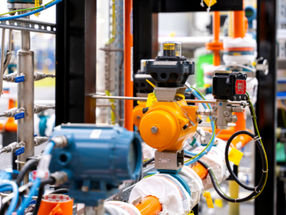Even though market volumes will double, the chemicals industry is facing sinking growth rates and profit margins
Advertisement
Although the market will continue to grow to about EUR 5 trillion and thus more than double by 2030, several internal and external trends are negatively impacting profitability in the industry. Increasing competition from Asia, the importance of sustainability, shorter and shorter lifecycles of chemical products and issues with sourcing raw materials will all play a role. By 2030, companies from the various chemical sectors will be engaged in fierce competition for additional market volume worth more than EUR 1 trillion. To do so, they will have to find a strategy that puts them ahead of the competition. These are key findings of the new study entitled "A different world – Chemicals 2030" by Roland Berger Strategy Consultants.
"Despite greater volatility in the chemicals market over the past two years, the global chemicals market will continue to grow," says Alexander Keller, Partner at Roland Berger Strategy Consultants. "Growth will be driven to a disproportionately large extent by the Asian and special chemicals markets, which will also shape the future of the chemicals industry."
Relocation to Asia
Over the next 20 years, the chemicals market will more than double from its current EUR 2 trillion to almost EUR 5 trillion. However, at the same time, critical developments will stifle margins and growth rates. According to Keller, "the NAFTA countries and Western Europe in particular will realize annual growth of only about 2%. China and India will remain the countries with the strongest growth. This will lead to a major shift toward Asia."
This trend is highlighted by the fact that currently 43% of the chemical's industry global market volume – worth EUR 2 trillion – is in Asia. "The most profitable high-growth segment will be plastics and specialty chemicals in the Asian market," explains Keller. "Rising Asian demand for chemicals means production will be increasingly moved to countries there."
Major challenges include meeting environmental requirements and ensuring raw materials supply
Other developments will also play a decisive role, such as sustainability. For instance, legal requirements regarding the environment will lead to higher production costs in practically all industry segments.
Problems with raw materials supply and rising prices will put a considerable strain on the global chemicals industry. "Companies that have easy access to critical raw materials will have a major competitive edge in the future. This is because they will be in a much better position to keep their production costs in check. Manufacturers of basic chemical products must pay special attention to this when developing their marketing strategy," explains Keller.
Companies focused on special chemical segments such as flavors and fragrances will have to compete against competitors with big brand names, huge customer portfolios or innovative product technologies. "There is fierce competition in this specialized market segment – driven by significant customer orientation – and especially on the local level and primarily in Asia," explains Keller. "Furthermore, Asian investors are acquiring more and more companies in Western countries to gain easier access to these companies' technologies and customers."
Fitting strategies for new scenarios
To best profit from the positive market developments in the next 20 years, chemical companies must align their strategies and business models with the new trends. According to the study, this is because an additional market volume of at least EUR 1.1 trillion will be there for the taking. To analyze the industry's possible development as well as the opportunities and challenges, Roland Berger's experts have developed three scenarios:
Global prosperity: Should the global market experience a boom, experts expect that the chemicals industry's market volume will grow to almost EUR 6 trillion by 2030. The key success factor here is the innovation of the individual companies.
Stable situation: This scenario assumes that mature markets will grow only moderately, whereas the emerging markets will really take off. The chemicals industry's global market volume in 2030 will reach EUR 5 billion. Companies will focus on leveraging innovation in mature markets plus pushing market activities and improving efficiency in the growth regions.
Regionalized world: In this case, experts assume that the mature markets will stagnate and the emerging market will experience moderate growth. This will lead to limited R&D investments, stronger focus on costs and further regionalization of production.






























































